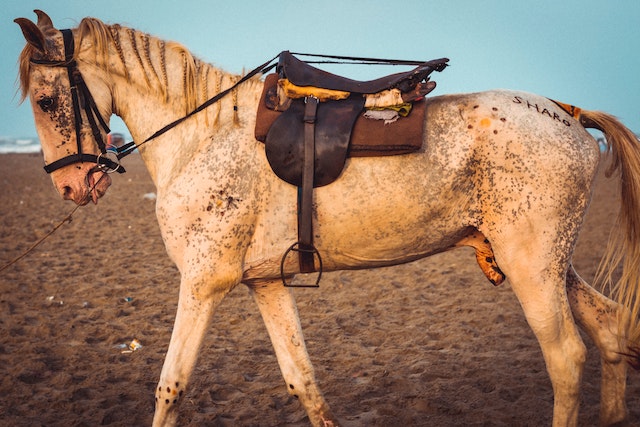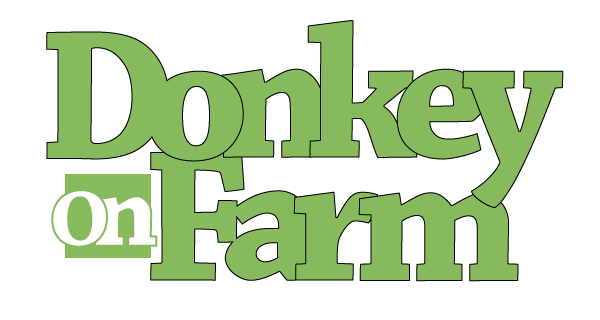Horses bobbing or nodding their heads have different meanings. It ranges from a signal of showing excitement or happiness to signs of discomfort and irritation. This makes it all the more important that you understand the reason behind your horse bobbing its head. For taking care of your horse better, be prepared with the signs and reasons behind bobbing its head. Read on and find out why horses bob their heads.
Horses Bobbing Their Heads: Why and When
You may find your horse bobbing its head while trotting and might just suspend it without giving it much thought. But experienced horse owners have testified that this should not be left unnoticed. The main thing to suspect is lameness when your horse’s head goes bobbing, and this bobbing happens when your horse is in motion, like trotting, galloping, or running. Since it is a gait abnormality that arises from pain, it is important to consult the vet regarding the matter. Head bobbing alone cannot also determine which limb has gone lame, especially if the situation is mild and not severe.

Horses are also seen bobbing their heads when they are sore. Then, you might notice your horse shifting its weight from the sore leg to the other, indicating which leg has your horse in pain. It is also found that the direction of bobbing could point to the legs that have lameness. That is, horses suffering from front leg lameness are seen to be bobbing their heads more upward than downward. The immediate action that you must do to not worsen the situation is to stop the horse from doing any activity and ask for help from the vet.
Other Head Movements that Your Horse May Make
As with most animals, simple movements of the limbs and heads are the ways through which horses communicate. And hence, to be known of the ways your horse communicates with you is crucial for a better exchange of news and information. If you are new to this field of owning and looking after a horse, it is important that you know the different head movements your horse might make. Horses nod, toss and bob their heads, all of which have certain meanings different from each other. Since you have already read about horses bobbing, let’s see what the others signal.
The head and neck of a horse weigh a lot compared to the rest of its body mass. Carrying their head is similar to carrying a load hence, swinging them in a rhythmic motion seems to help them carry the weight better. This movement helps them to conserve energy for running and other work. Hence, horses tend to move their heads while walking and trotting just as a process of conserving their energy, to be prepared for any situation that may arise later.
Nodding Their Heads for Attention
Horses are commonly seen nodding their heads in order to catch attention. Especially when they see someone they like or are more interested in, they seek attention by nodding their heads. Similar action also takes place when it is time to eat, and someone is bringing them food, or when they are being taken out for a ride. These come in the category of the excitement of the horse, especially when they are kept in their stalls for long hours, making days long and boring for them. Also, nodding their heads is said to have them release endorphins.

Head Movements and Related Health Conditions
Horses also nod their heads or rather shake them violently when something is bothering them. These, most of the time will be something related to their tooth or ear. Insect attacks or tumors are the main reasons for horses to have ear infections, leading them to violently shake their heads.
A condition called photic head shaking must be disturbing your horse if it jerks its head violently for no particular reason but just the exposure to sunlight. This is accompanied by the horse experiencing really painful nerve sensations in its muzzle. Rubbing their head, snorting, and sneezing are also symptoms of this condition. Some horses have conditions so severe that they no longer could be ridden, while others could be treated by using a sunshade mask. The symptoms are seen to subside during the winter and re-emerge in the spring.
Your horse may also toss its head during a ride, alarming you to wonder what it might be. The most common reason behind this could be found as a tooth problem, making it uncomfortable for your horse. Make sure that your horse’s teeth are floated down periodically. The failure to do so could result in pain in the mouth for the horse and hence cause head shaking.
The tack not fitting properly will also lead your horse to feel uncomfortable and show signs of it. Bits of the right size placed in the right position is crucial to make your horse at ease. You can check whether the bit is placed the right way by running your hands over your horse’s gum and finding the fit for yourself. And, if the bits are correctly placed, you could find a few wrinkles on the side of the horse’s mouth.
An improperly fitting saddle can also cause pain to your horse, making it shake its head. So, check whether the saddle fits your horse once you start seeing discomfort on them. Another reason also includes musculoskeletal pain, according to recent research.
Conclusion
By now, you must have a pretty clear idea as to why horses bob or nod or toss their heads and why it is important to take them seriously. Knowing these are crucial to ensuring the well-being of your horse and its happiness, which we know you will never compromise with. Also, make sure to consult the veterinarian if something seems wrong with your horse without much delay.

![Why Do Horses Bob Their Heads? [Don’t Ignore Their Head Movements] why do horses bob their heads](https://donkeyonfarm.com/wp-content/uploads/2023/03/why-do-horses-bob-their-heads.jpg)

![Do Horses Recognize Their Owners? [Hint: It Depends] do horses recognize their owners](https://donkeyonfarm.com/wp-content/uploads/2023/03/Do-Horses-Recognize-Their-Owners-270x180.jpg)
![Are Horses Loyal to Their Owners? [With Tips to Earn Their Trust] are horses loyal to their owners](https://donkeyonfarm.com/wp-content/uploads/2023/04/are-horses-loyal-to-their-owners-270x180.jpg)
![What Human Food Can Horses Eat? [There Are Some They Can’t] what human food can horses eat](https://donkeyonfarm.com/wp-content/uploads/2023/07/the-horse-gray-is-gray-horse-preview_11zon-270x180.jpg)
![Why do Horses Show Their Teeth? [And What to Do About It?] why do horses show their teeth](https://donkeyonfarm.com/wp-content/uploads/2022/12/Why-do-Horses-Show-Their-Teeth-270x180.jpg)